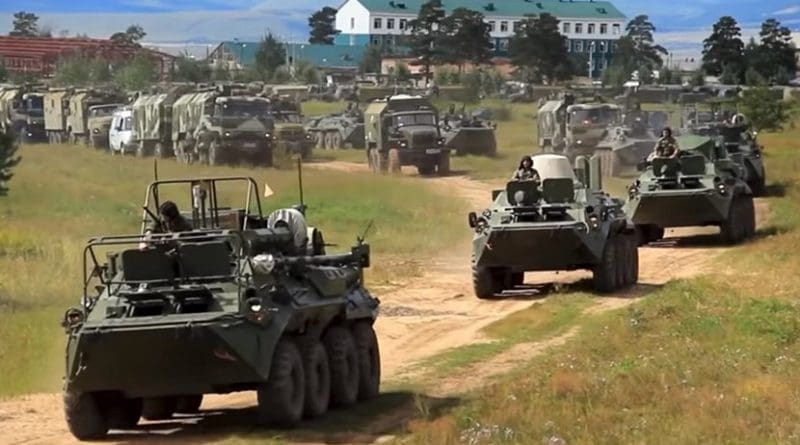Moscow’s Much-Ballyhooed Vostok 2018 Military Maneuvers Involve Far Fewer Soldiers Than Advertised – OpEd
By Paul Goble
In an article for New Times independent Russian military analyst Aleksandr Golts says that the ongoing military maneuvers that Moscow is called Vostok 2018 are neither as large or significant as the Russian government claims but that there is a real danger that Vladimir Putin actually believes the falsehoods his generals are giving him.
For Russian rulers, it has long been “good tone” to frighten the rest of the world with their country’s “military might,” Golts says. Putin is no exception, but the size and even intentions of the military maneuvers taking place now under his watch do not stand up to close scrutiny (newtimes.ru/articles/detail/169616).
The Russian defense ministry says that the current maneuvers to be held in the Asiatic part of Russia will involve “approximately 300,000 soldiers and more than 36,000 pieces of all kinds of military equipment” and as such will be the largest Moscow has organized since Brezhnev’s Zapad-1981 37 years ago, notions that have indeed intimidated some.
But it is clear that both the size of the current maneuvers and their purposes should not be compared with the Brezhnev-era exercise, Golts says. In 1981, Moscow had a five-million-man strong army and deployed only 100 to 120,000 men in these maneuvers, two to three percent of the total. Now Moscow “promises to use a third of the entire complement of the army and navy.”
Thirty-seven years ago, military planners talked about using mass armies and nuclear weapons. “Today, however, “when the probability of using millions of soldiers in combat is close to zero, no one conducts maneuvers of this size” – including the Americans, the British and the Chinese, the Moscow analyst says.
In 1981, Moscow used the maneuvers to send a political message to Poland where Solidarity and the communist rulers were locked in conflict. And consequently, the exercise was held in the European portion of the USSR. Now, “no sudden crises in the east are on the horizon, and Russian-American conflict is growing in an entirely different part of the planet.”
Moscow does in fact continue to use maneuvers to send political messages. Just last month, it staged a fleet maneuver in the eastern Mediterranean to let Washington know that there would be consequences of the US attacked Bashar Asad. Moscow put 26 ships into this maneuver, almost all the ships it had that could make it to that theater.
But the Vostok-2018 exercises are on the other side of the world and could only be used to send a message to China. But 3,000 Chinese soldiers are participating in the maneuvers so they can hardly be the focus of any military messaging from Moscow, Golts continues. And that is more likely because the exercise is to have 16 sub-exercises rather than one overriding task.
“The biggest mystery of the maneuvers,” the analyst suggests, is “why such large maneuvers are being conducted in the eastern part of the country.” That mystery can be dissolved “very simply.” In Asiatic Russia, Moscow can lie to the world about what it is doing without anyone likely to find out, while in European Russia, its actions would be subject to scrutiny.
It is certain, Golts argues, that the number of military personnel taking part will not be 300,000 but perhaps fewer than half as many, and the amount and kinds of military hardware will be less as well. And despite talk that reservists will be involved, there have been no callups announced in the Russian media.
Besides serving to intimidate others, the only obvious purpose of holding such maneuvers in the East is to improve Moscow’s ability to move forces from one place to another, Golts says. That has been something the defense ministry has been working on for some time. But almost everything else about Vostok-2018 seems either false or inflated.
The real danger from that is not to others, at least not directly, but rather to President Putin who may actually “seriously believe” that the Russian military can perform in the ways that his subordinates tell him, the independent analyst says. That could easily become a new source for mistaken calculations and decisions.

